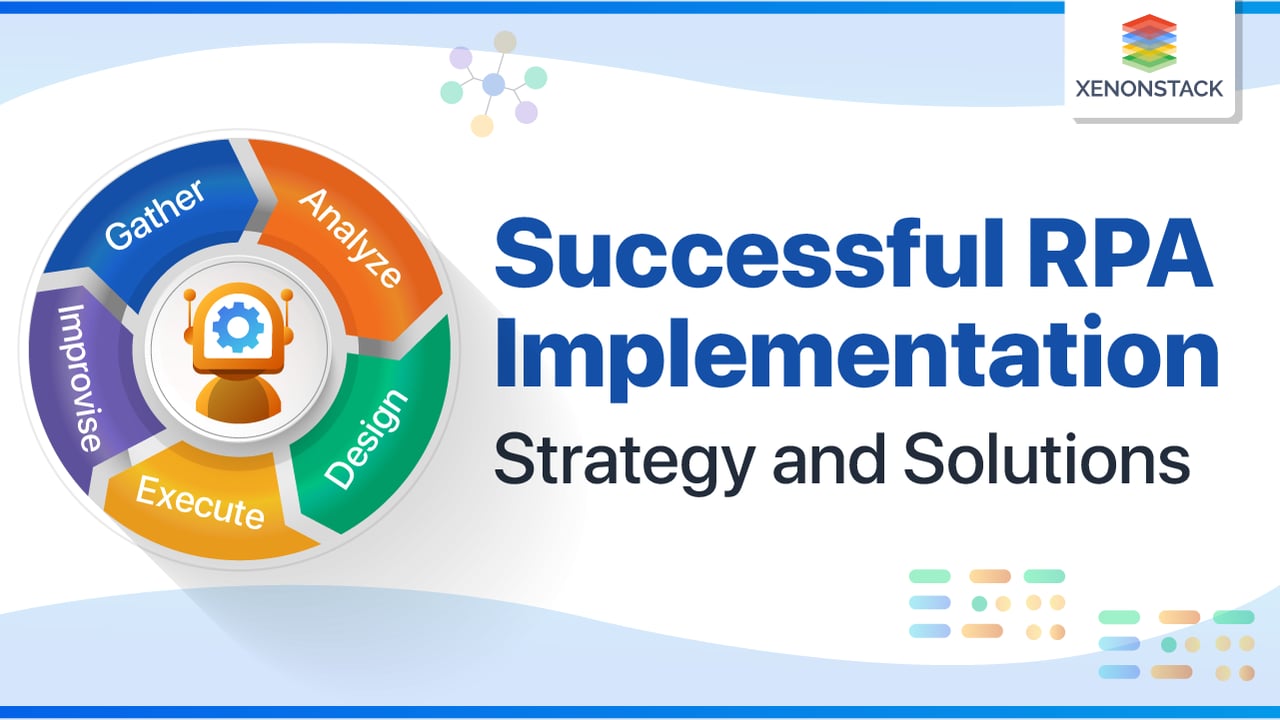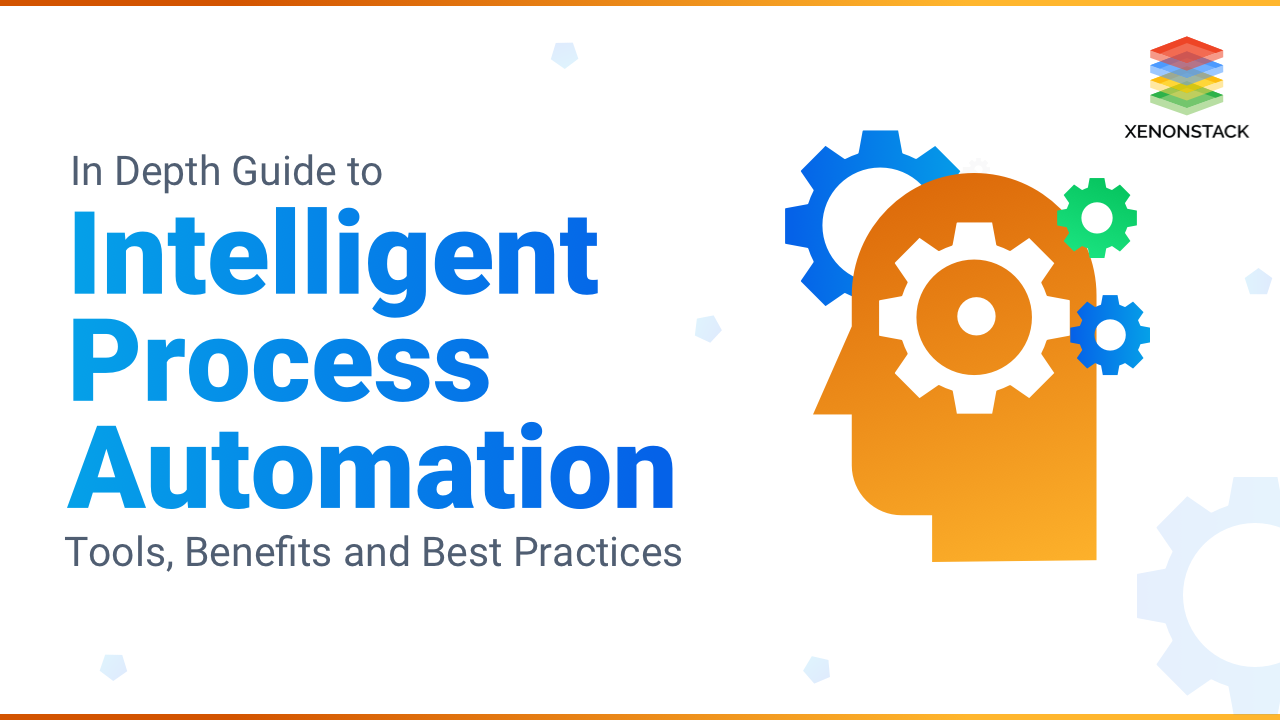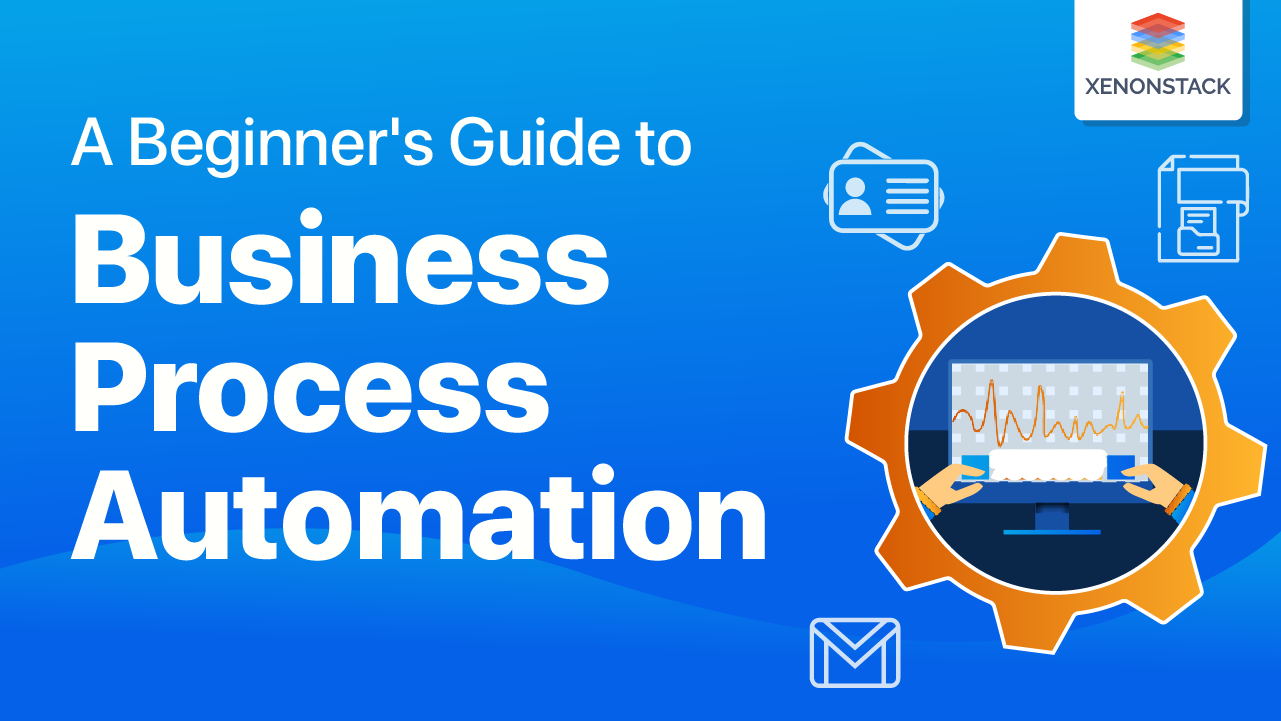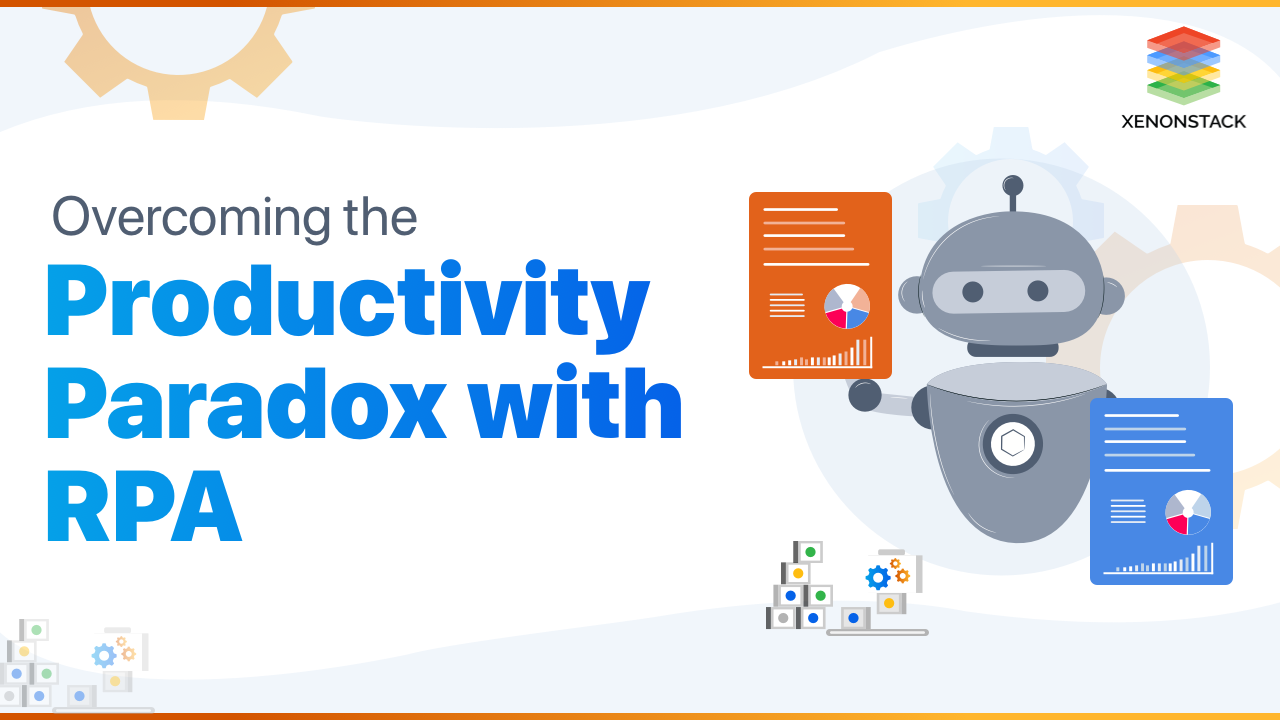
Overview of RPA Strategy and Implementation Roadmap
Robotic Process Automation (RPA) projects are failing nowadays because people are trying to apply RPA to their work without even knowing what their process needs and how much automation is required. Everyone who is working in technology knows that things are always changing, and the band moves quickly. But when it comes to RPA, we should not jump.
The leaders must understand the how and why behind the RPA strategy. A successful RPA implementation requires some maintenance to ensure that processes are being executed properly. Organizations should be realistic about the complexity of their operations. If the process is extremely complex and requires human intervention, then it's not the right process for RPA. The excellent process is where the work is:
-
Performed independently and cognitively: The process should run autonomously with minimal human input and require basic decision-making.
-
A stable and well-defined process: The process should have clear, predictable steps that are easy to automate.
-
Rule-based: The process should follow predefined rules that can be consistently executed by automation.
RPA is an effective way to get accuracy in the successful execution of a task. Taken From Article, Build RPA Center of Excellence
RPA projects tend to fail in two scenarios: "Either the process which has been automated is not a robotic process as it was thought, or the automation is running in such a way that needs to be more dynamic than previously identified." Before using RPA, we have to think of what processes need automation and if they need to be more dynamic or not.
Understanding Common Reasons for Failures in RPA Projects
RPA projects often fail when the process is more dynamic than anticipated. If the process works in an ever-changing environment, it must still give accurate outcomes. RPA is good at following the instructions given to it but cannot handle unexpected events or make case-by-case decisions. Therefore, when decision-making is involved, humans need to be part of the process.
We likely want to see the growth of use cases where RPA is deployed alongside cognitive technologies. RPA bots break when faced with scenarios they weren’t trained or instructed on. If an RPA project aims to make the process more efficient, it’s crucial to have a clear strategy for how RPA will be utilized. Without this, there’s a risk that RPA will become a standalone business function that is not fully integrated with the broader business needs.
Key areas of failure in RPA projects include:
-
Dynamic processes: Processes that require flexibility and change are harder to automate effectively with RPA.
-
Lack of cognitive capabilities: RPA bots can’t handle unexpected events or learn independently.
-
Absence of a clear strategy: Without a defined strategy, RPA can become disconnected from the organization’s goals.
-
Not a one-size-fits-all solution: RPA should not be applied to every problem, as it works best with repetitive, rule-based tasks.
There is still a need for humans to manage expectations. Taking humans out of the equation too early can lead to RPA challenges later. RPA works best for processes that are repetitive and do not require human judgment. It is not suitable for tasks where human intervention is required. The RPA Implementation will be more successful if processes go through a selection process involving the IT, business, and RPA teams.
RPA is part of a continuum of automation that begins with basic, local tasks and expands to enterprise-wide, smart automation powered by ML and AI. Taken From Article, Scaling Up RPA for Process Automation in an Organization
Why RPA Projects Fail?
-
Process Selection: The poor selection of the process is a major cause of failure. Research has shown that choosing the wrong processes is the leading cause of failure. When selecting a project, we must also consider its long-term consequences.
-
Instability: If the process is not stable, it is not suitable for RPA. Unstable processes with unstructured inputs are not ideal candidates for automation.
Key Factors That Contribute to Successful RPA Strategy
The project may fail if the business case is not well-defined or properly communicated. Prioritizing the right processes at the right time is crucial for success. The primary purpose of implementing RPA is to make businesses operate more fluidly and efficiently. A solid RPA strategy is needed to determine how RPA tools and RPA software will be deployed and utilized effectively. With a clear vision for the use of RPA, businesses can ensure that the right RPA software is chosen to meet the needs of many.
Cognitive technologies extending RPA’s reach. Taken from the Article: Cognitive Robotic Process Automation (RPA)
Another factor that may lead to RPA implementation failure is insufficient stakeholder awareness or a lack of support from critical stakeholders, such as the CEO, during the early stages of the project. Business teams manage RPA projects, and no robot can run without a computer, a user account, or proper access. Without their support, it becomes more challenging to get an RPA project up and running.
People: Internal and External
The insufficient involvement of stakeholders and RPA partners with limited skills or experience can also lead to failure. RPA works well for repetitive processes that do not require human judgment. Even processes that meet the criteria for automation are the best candidates for RPA solutions. RPA tools excel at following instructions but struggle with learning independently or handling unexpected events. Removing the human user entirely from the process may lead to operational challenges, as there will still be a need for human intervention to manage exceptions. Human users must be prepared to help address these exceptions, be knowledgeable about RPA, and remain adaptable to changing demands.
Essential Strategies for Effective RPA Implementation and Results
Good preparation is crucial for a successful RPA implementation. Organizations that seek to achieve effective RPA deployment must align their business goals with the organization’s constraints, such as rules, policies, and procedures. Here are some basic rules for RPA implementation:
Correct Business process
Complex processes requiring more human intervention are likely to fail with RPA automation. Processes that require significant human business judgment should be avoided when choosing the right process for robotic process automation. The correct processes for automation include tasks such as data manipulation, data extraction, and continuous, repetitive UI-interacted processes, which can be automated effectively.
The Right Choice of RPA Tool
Selecting the right RPA tool is essential for the success of RPA implementation. Popular RPA tools like UiPath, Blue Prism, Automation Anywhere, and PEGA each have unique features that support specific RPA solutions. Choosing the right tool based on the business process is crucial to ensure smooth and efficient automation.
Organized and Documented Process
The process to be automated must be well-documented, including details such as the as-is process, automated processes, and potential future errors in the business process. This documentation should be approved by both the business team and the IT team to ensure that all stakeholders are aligned and the automation runs smoothly.
Time is Money
Organizations implement RPA because bots are much faster than humans, with fewer handling errors. The automated process should complete tasks in 40 to 50% less time than it would take a human to do the same task. This time-saving is one of the key benefits of RPA.
Bot Developers
When implementing RPA development solutions, it is essential to choose bot developers who understand RPA best practices. These developers should be knowledgeable about the business process before beginning development, ensuring the automation aligns with business needs and functions effectively.
Key Elements of an RPA Strategy
The five essential elements of an RPA strategy are:
Why Businesses Need RPA to Drive Operational Efficiency
The basic requirement of implementing RPA at the business level is to engage employees in more strategized work rather than just filling in the information, sending emails the whole day, and other boring and repetitive tasks. The process can be automated as follows.
-
Logging into Applications: Logging into multiple websites or systems can be time-consuming for employees. An RPA bot can automate the login process across all required applications, allowing employees to focus on other important tasks.
-
Copying and Pasting Data: Tasks such as copying data from one Excel sheet to another or extracting data from emails into Excel are tedious and time-consuming. RPA can handle this task quickly with better accuracy, reducing the chance of human error.
-
Moving Files and Folders: Copying files from one folder to another is a repetitive and tedious task. With RPA technology, this process can be automated, saving employees valuable time.
-
Extracting and Processing Structured and Semi-Structured Content: RPA can extract data from emails, PDFs, forms, and other structured content, processing it efficiently.
For example, extracting data from monthly leave analytics or payment reports can be automated and organized into documented formats.
-
Reading and Writing to Databases: RPA bots can automate the extraction of employee data from databases and save it into documents or Excel files. This reduces the manual effort required for updating and managing databases.
-
Making Calculations: RPA can automate analytical calculations and provide results based on predefined logic, ensuring accuracy and speed without human intervention.
-
Opening Emails and Attachments: Manually opening emails and saving attachments can be time-consuming. RPA can automate this process, quickly opening emails and saving the attachments to designated folders, improving efficiency.
Steps to Effectively Implement RPA in Your Organization
Right now RPA bot is not as reliable as it has to be, RPA technology will work more at deployment and will develop the bots with AI/ML integrations in 2021. Right now, RPA is facing pitfalls like UI automation, In Ui Automation RPA requires a fixed UI. When a UI changes, a bot has to also upgrade or redevelop. RPA technology is dependent, and making it totally independent is an ultimate goal in 2021. In 2021, RPA tried to make itself independent by making unattended bots for organizations. Changes that are going to be seen this year are as follows :
-
RPA to SPA (Smart Process Automation): Robotic Process Automation will transition into Smart Process Automation (SPA) by integrating AI and ML. This will allow for more intelligent automation and improved decision-making, which is a focus for many RPA companies working to merge these technologies for better results.
-
RPA Bot More Independently: Some RPA bots require human synchronization for better analytical results; RPA companies are working on them and making unattended bots for the human workforce so they will see the result only.
-
RPA as Service: Some organizations now offer RPA as a service, where they manage RPA bots on their platform for clients. These services focus on improving both performance and quality over time, ensuring that bots continue to deliver optimal results.

Building a Holistic RPA Strategy for Long-Term Success
Scalability in RPA should not be limited to hosting; it should also extend to maintaining, managing, and controlling RPA processes effectively. As organizations scale their RPA programs, maintaining and managing these operations introduces new dynamics that the organization may not have previously encountered. The issue of scalability is complex and requires a coordinated effort across the business to assess and address properly.
An alternative for RPA must be explored first to understand the best approach for your organization. Processes that involve customer data require careful consideration of privacy and security implications, especially regarding sensitive information. These concerns become even more evident when scaling automation efforts.
Failing to invest in the right RPA tools can have a significant impact on the outcome of an organization’s automation journey. It can lead to wasted time and effort on projects that do not deliver the expected results. Therefore, it is critical to ensure that proper processes are followed before selecting the appropriate RPA tool for automation.
Key Takeaways from RPA Strategy Insights
In implementing a holistic RPA strategy, it is crucial to focus not only on scalability in hosting but also on the ability to manage, maintain, and control the processes effectively. As organizations scale their RPA programs, they must address the new challenges that arise, especially regarding the privacy and security of customer data. Choosing the right RPA tools is essential for success; failing to do so can lead to wasted resources and suboptimal outcomes. By carefully assessing processes and selecting the most appropriate tools, businesses can ensure a smooth and effective automation journey that supports long-term growth and efficiency.
Next Steps to Take in Your RPA Journey
Talk to our experts about implementing the RPA strategy. Learn how industries and different departments use Agentic Workflows and Decision Intelligence to become more decision-centric. Leverage RPA to automate and optimize IT support and operations, enhancing efficiency and responsiveness.



